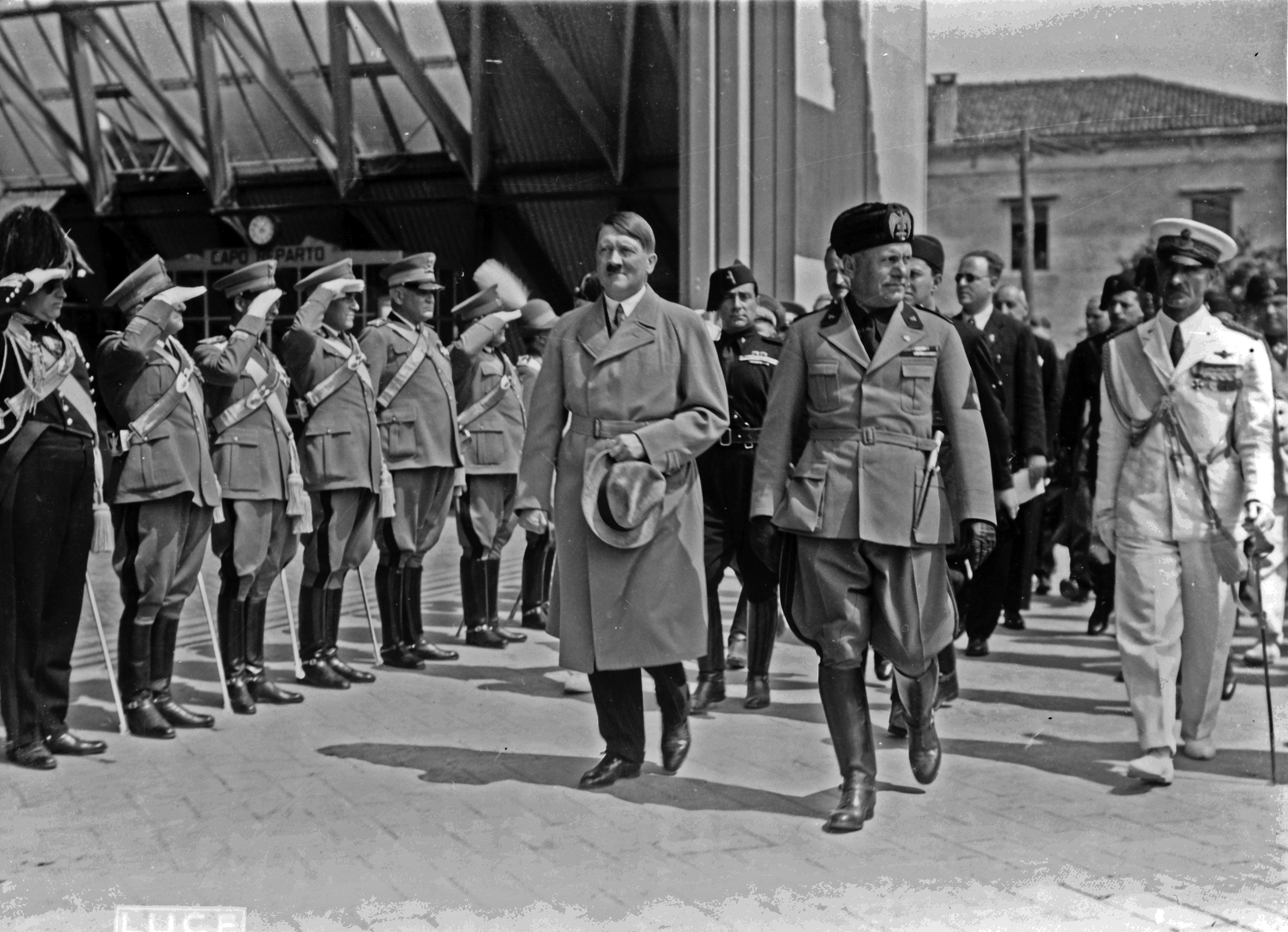Adolf Hitler (left) and Benito Mussolini (right) in Venice, Italy, in June of 1934. Two years later, in 1936, the two dictators would form an Axis between their two countries, Germany and Italy. Click here to enlarge.
The relationship between Adolf Hitler and Benito Mussolini was complex, characterized by mutual admiration, political collaboration, and strategic alliance, though it also had moments of tension and divergence in objectives. Mussolini, the Fascist leader of Italy, came to power in 1922, over a decade before Hitler's rise in Germany. Hitler admired Mussolini's ability to establish a totalitarian regime and sought to emulate his methods to gain and consolidate power.
When Hitler became Chancellor of Germany in 1933, he viewed Mussolini as a mentor and sought his approval. Initially, Mussolini was skeptical of Hitler and the Nazi ideology, seeing the potential for conflict between their nations' ambitions. However, the two leaders found common ground in their anti-communist stance and their desire to revise the post-World War I international order.
The relationship strengthened with the signing of the Rome-Berlin Axis in 1936, which formalized their alliance. This pact was further solidified by the Pact of Steel in 1939, committing Germany and Italy to military and political cooperation. Mussolini's decision to align Italy with Nazi Germany was influenced by Hitler's early military successes and his desire to expand Italian influence in Europe and Africa.
Despite their alliance, there were notable differences in their strategies and ambitions. Mussolini sought to recreate a Roman Empire in the Mediterranean, while Hitler's goals were more focused on territorial expansion in Eastern Europe. The invasion of Greece by Italy in 1940, which went poorly and required German intervention, highlighted the tensions and strategic misalignments between the two leaders.
As World War II progressed, Italy's military failures and economic difficulties strained the relationship. Hitler often had to support Mussolini's faltering regime, culminating in the German rescue of Mussolini after his arrest in 1943. Despite these challenges, the two leaders maintained a facade of unity until the end of the war.
The relationship between Hitler and Mussolini was a blend of admiration, strategic necessity, and pragmatic alliance, ultimately shaped by the pressures and exigencies of World War II. Their collaboration had significant implications for the course of the war and the fate of their respective countries.
|















